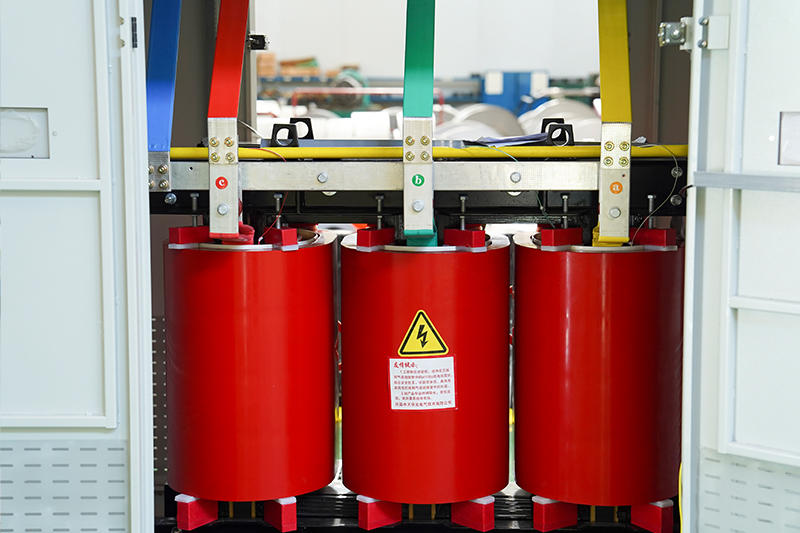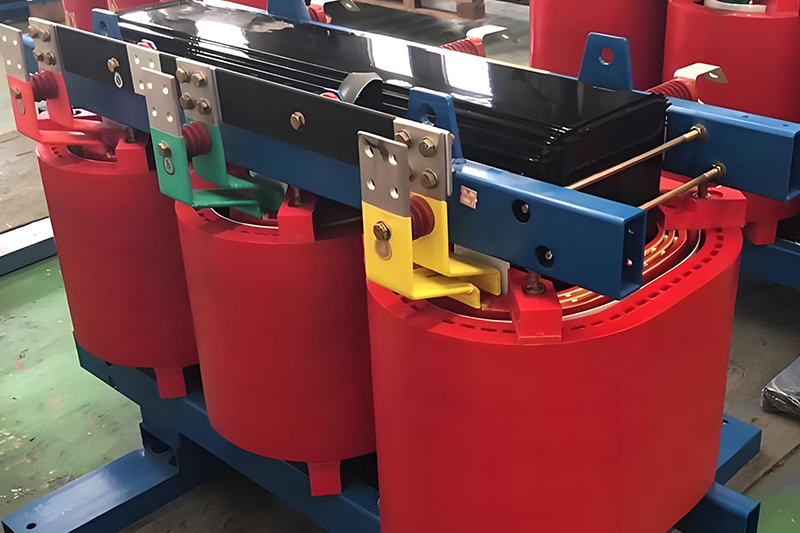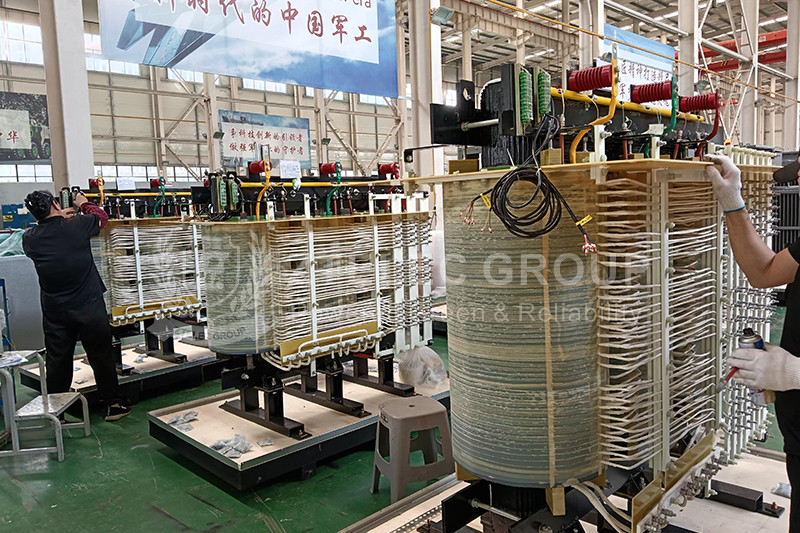How High Temperatures Affect Dry-Type Transformers: Risks, Protection, and Optimization Strategies
Dry-type transformers are widely used in high-rise buildings, rail transit, hospitals, data centers, and industrial facilities due to their safety, environmental friendliness, and ease of maintenance. However, with the increasing frequency of extreme summer heat, high ambient temperatures are placing new challenges on the reliable operation of dry-type transformers. Excessive heat can accelerate insulation aging, reduce electrical performance, cause overheating failures, and threaten the stability of power supply systems.

1. Major Impacts of High Temperature on Dry-Type Transformers
Dry-type transformers rely on natural air cooling or forced-air systems to dissipate heat. Under high-temperature conditions, cooling efficiency drops significantly, leading to the following issues:
(1) Accelerated insulation aging: Dry-type transformers typically use F-class (155℃) or H-class (180℃) insulation systems. Elevated temperatures increase the internal winding temperature, which accelerates insulation degradation and shortens transformer lifespan.
(2) Core and winding overheating: At high temperatures, core losses and copper losses compound, leading to further heating. In full-load or overload conditions, this may cause core coating to peel off, winding deformation, or support structure failures.
(3) Frequent thermal protection triggering: Thermal sensors, PTCs, or relay protectors may activate frequently in summer, resulting in repeated shutdowns and affecting power continuity.
(4) Decreased energy efficiency: Long-term high-temperature operation increases energy losses, reduces transformer efficiency, and raises operational costs.
2. Temperature Rise Standards and Design Limits
According to IEC 60076-11 and GB/T 10228 standards, the permissible temperature rise for dry-type transformers is as follows:
– F-class insulation: max temperature rise 100K, max temp 155℃
– H-class insulation: max temperature rise 125K, max temp 180℃
– Ambient design temperature is 40℃. For environments exceeding this, derated operation is required.
Therefore, when operating in high-temperature regions or during heatwaves, appropriate cooling and thermal management must be implemented.
3. Optimization Strategies for High-Temperature Operation
To ensure safe operation in hot conditions, transformer design and operation must be optimized in four key areas:
(1) Structure and material upgrades
– Select higher-class insulation systems (e.g., H-class or C-class)
– Use low-loss magnetic cores and epoxy resin cast windings for better heat resistance
– Optimize air ducts and ventilation channels to improve natural and forced cooling
(2) Installation environment optimization
– Ensure adequate airflow around the transformer; avoid blocked air vents
– Install ventilation fans or exhaust systems to enhance indoor air exchange
– For outdoor installations, avoid direct sunlight and consider shading structures
(3) Operational control strategies
– Install smart temperature monitoring systems to track core and winding temperatures
– Trigger cooling fans or reduce load as temperatures approach limits
– Apply automatic derating logic to ensure thermal safety
(4) Maintenance and inspection improvements
– Increase inspection frequency during hot seasons, focusing on fan performance and winding temperatures
– Regularly clean air filters and ventilation paths to prevent dust buildup
– Test thermal protection devices to ensure proper function

4. Derating Guidelines for High Temperature
When ambient temperatures exceed 40℃, transformers should be derated as follows:
– For every 1℃ increase, reduce load capacity by 0.5% to 1%
– At 45℃, run at 95% of rated capacity
– Above 50℃, implement forced air cooling or reduce load significantly
Additionally, shift heavy loads to cooler times of the day to avoid peak heat operation.
5. Importance of Intelligent Monitoring Systems
As smart grid technologies advance, intelligent transformer monitoring has become essential for safe and efficient operation:
– Real-time monitoring of winding/core temperatures, load, voltage, fan status, etc.
– Predict overheating risks via trend analysis
– Remote integration with SCADA systems for alarms, controls, and diagnostics
These systems enable proactive risk management and enhance reliability during extreme heat conditions.
High temperatures pose serious risks to the performance and longevity of dry-type transformers. To address these challenges, manufacturers and operators must adopt structural design enhancements, optimize ventilation, implement smart monitoring, and establish robust maintenance protocols. These measures not only safeguard transformer health but also ensure stable power supply throughout the hot season.
- more+releated article
- 2025-10-21Application of K Factor Transformer
- 2025-10-21Detailed explanation about transformer model w
- 2025-10-2010kV Oil-Immersed Transformer Safety: Lightnin
- 2025-10-20What are The Advantages of Phenolic Cotton Clo
- 2025-10-17Are Three-Phase Isolation Dry-Type Transformer
- 2025-10-17G10 Epoxy Sheet: Choosing the Right Specificat
- 2025-10-1610kV Oil-Immersed Transformer Operation Inspec
- 2025-10-163240-B Epoxy Phenolic Glass Fiber Cloth Lamina
- 2025-10-15G10 Epoxy Sheet: The Preferred Insulation Mate
- 2025-10-15Analysis of Energy-Saving and Noise Control Te





